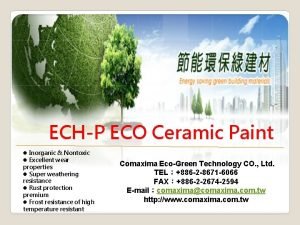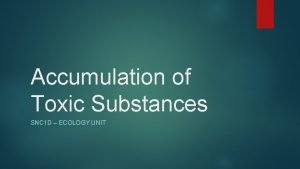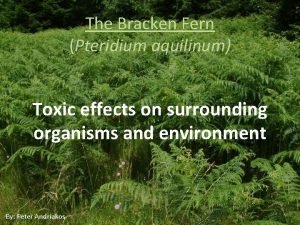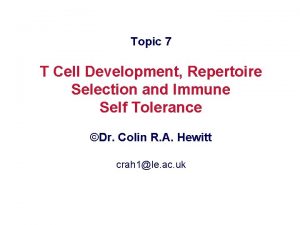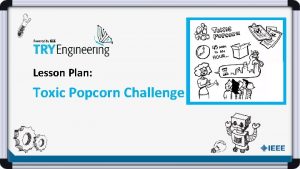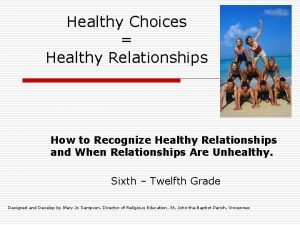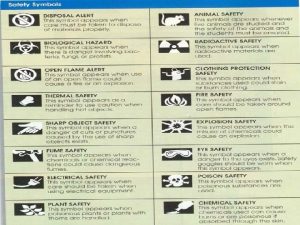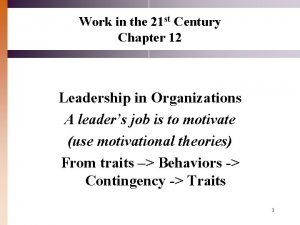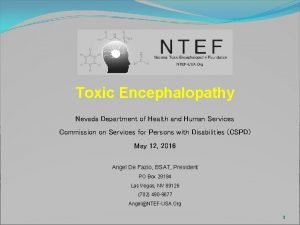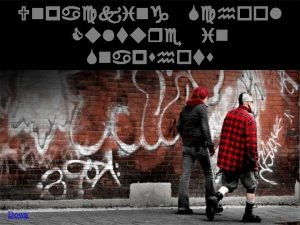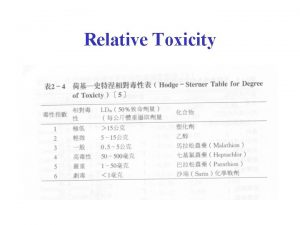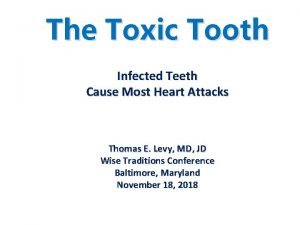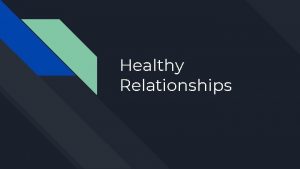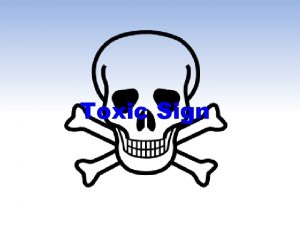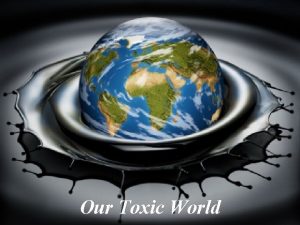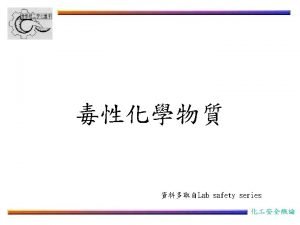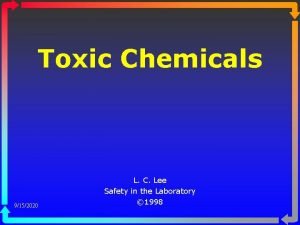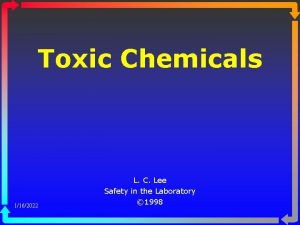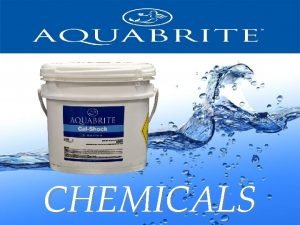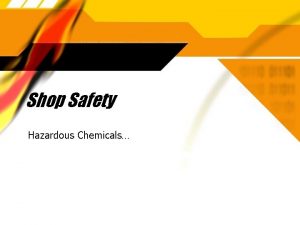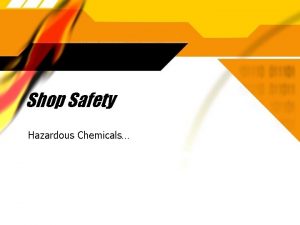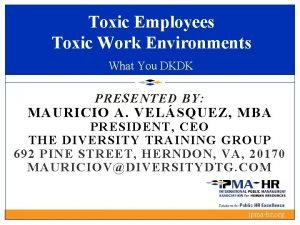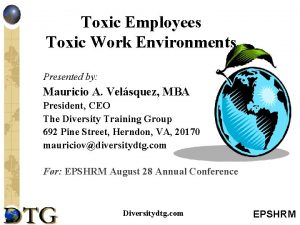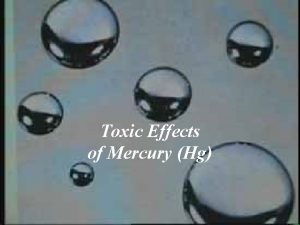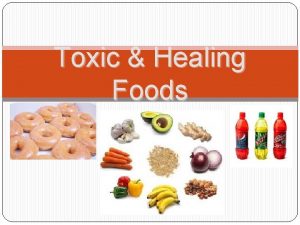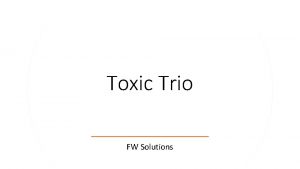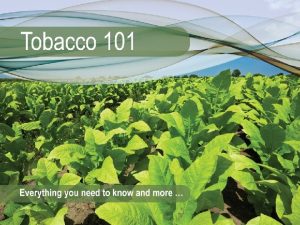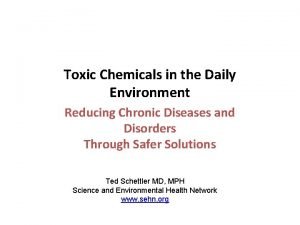Toxic Chemicals L C Lee Safety in the





















- Slides: 21

Toxic Chemicals L. C. Lee Safety in the Laboratory © 1998, revised 2016 Image retrieved from Facebook, IFLS page. Information is unverified.

Toxic Chemical Learning Targets Understand the hazards of working in a chemistry lab, and how to prevent injury to yourself and others. 1. Practice basic lab safety rules and precautions 2. Interpret hazard symbols for chemicals 3. Describe 4 routes of chemical entry and how to prevent each 4. Describe types of injury from chemicals. 5. Explain why people are impacted differently by chemicals 6. Explain LD 50 and TLV 7. Be able to find target info on SDS

What is a Toxic Chemical? Any chemical which, when ingested, inhaled, absorbed or injected into the body, in relatively small amounts, by its chemical action, may cause damage to structure or disturbance to function ~ From Dorland’s Medical Dictionary

Hazard Pictograms HCS (Hazard Communication System) HEALTH HAZARD • Carcinogen • Mutagenicity • Reproductive Toxicity • Respiratory Sensitizer • Target Organ Toxicity • Aspiration Toxicity FLAME • Flammables • Pyrophorics • Self-Heating • Emits Flammable Gas • Self-Reactives • Organic Peroxides

Hazard Pictograms HCS (Hazard Communication System) EXCLAMATION MARK • Irritant (skin and eye) • Skin Sensitizer • Acute Toxicity • Narcotic Effects • Respiratory Tract Irritant • Hazardous to Ozone Layer GAS CYLINDER • Gases under pressure

Hazard Pictograms HCS (Hazard Communication System) CORROSION • Corrosive to skin • Eye damage • Corrosive to metals EXPLODING BOMB • Explosives • Self-reactives • Organic Perozides

Hazard Pictograms HCS (Hazard Communication System) OXIDIZERS ENVIRONMENT • Aquatic Toxicity

Hazard Pictograms HCS (Hazard Communication System) ACUTE TOXICITY • Fatal or toxic; poison

9 4 Routes of Chemical Entry Absorption - skin contact Inhalation - through the lungs Ingestion - via the mouth Injection - via a puncture wound (cut) Routes of Entry Absorption Inhalation • Skin • Eyes • Lungs • Respiratory System Ingestion Injection • Gastrointestinal Tract • Bloodstream • Skin • Muscle

Prevention of Chemical Entry: Do not eat or put anything in your mouth while working in lab. NO gum, candy. Do not chew your pen or fingernails. Wash hands before leaving Handle glassware carefully Waft chemicals to detect odor Work in well-ventilated area or fume hood

Personal Protective Equipment PPE must suit the hazard Chemical splash goggles Whenever heat, chemicals, or glassware in the area Protective apron or lab coat Shoes with closed toes Hoods, hats with brims, baggy sleeves, coats, scarves, ties are unsafe Fire hazards Other hazards

Three types of damage caused by chemicals: Damage to biological structure Example: Disturbance of biological function Example: Damaging both structure and function Example:

Damage Can Be Local or Systemic Local - affects only the exposed part. Contact through absorption, inhalation, ingestion, or injection Systemic - effect of a substance after absorption the bloodstream. Absorption may take place through the skin, stomach, or lungs.

Acute or Chronic damage? Acute toxicity - victim becomes ill or injured after “short exposure” sometimes just a few moments Chronic toxicity - effects of a toxicant on a body over a long period, sometimes several years Effects may not be noticed until the damage is too far advanced to correct.

Measuring Toxicity: LD 50 Lethal Dose. 50% kill dose which, when administered to test animals, kills half of them. Usually refers to ingestion or injection Units are mg of toxicant per kg of body mass Correlating rat-doses to man-doses LD 50 for a chemical ingested by rats is 8 mg/kg. How much would each person in a group of 150 lb people need to ingest to have a 50% fatality rate?

Measuring Toxicity: TLV Threshold Limit Value Maximum concentration of a toxicant or corrosive in air that is known NOT to cause damage or illness. Units are ppm (parts per million) Used to describe toxicity by inhalation

Variables Affecting Toxicity Not everyone suffers equally from toxicity. The effects may vary from person to person depending on: Mode of entry Physical Condition Dose and/or Duration Sensitivity; Stress Combined effects Gender, race, temperature, altitude, body chemistry

Safety Data Sheet: Information : Chemical Name and Formula Hazards Identification Physical data: formula weight, solubility, appearance, odor, density (specific gravity) Toxicity info: LD 50, TLV Exposure Control and PPE needed First Aid measures

First Aid INFORM INSTRUCTOR OF ANY INJURY NO MATTER HOW SMALL! Minor burns: hold under cold running water Minor cuts: rinse under cold running water

Summary: Following the Lab Safety Rules will help prevent injury

5 Categories of Hazardous Chemicals Toxics - poisons; usually cause systemic damage Reactives - react chemically with everyday substances Corrosives - corrode substances including flesh Flammables – combust (burn) Compressed gases - very high pressure (Scuba cylinder, Helium tank) Gas may or may not also be toxic or flammable
 Commodity vs specialty chemicals
Commodity vs specialty chemicals Non toxic ceramic paint
Non toxic ceramic paint Toxic substances control
Toxic substances control Whats bioaccumulation
Whats bioaccumulation How toxic is bracken fern
How toxic is bracken fern Toxic trio safeguarding
Toxic trio safeguarding Double positive t cells
Double positive t cells Toxic popcorn
Toxic popcorn Toxic communication
Toxic communication How to deal with difficult people
How to deal with difficult people Multinodular goiter pathophysiology
Multinodular goiter pathophysiology Toxic
Toxic The history of grading practices
The history of grading practices Padilla
Padilla Acute toxic encephalopathy icd 10
Acute toxic encephalopathy icd 10 Toxic school culture
Toxic school culture Which is more toxic
Which is more toxic What is a toxic multinodular goiter
What is a toxic multinodular goiter The toxic tooth
The toxic tooth Non toxic revolution
Non toxic revolution Monogamous relationship
Monogamous relationship Toxic relationship quiz pdf
Toxic relationship quiz pdf

